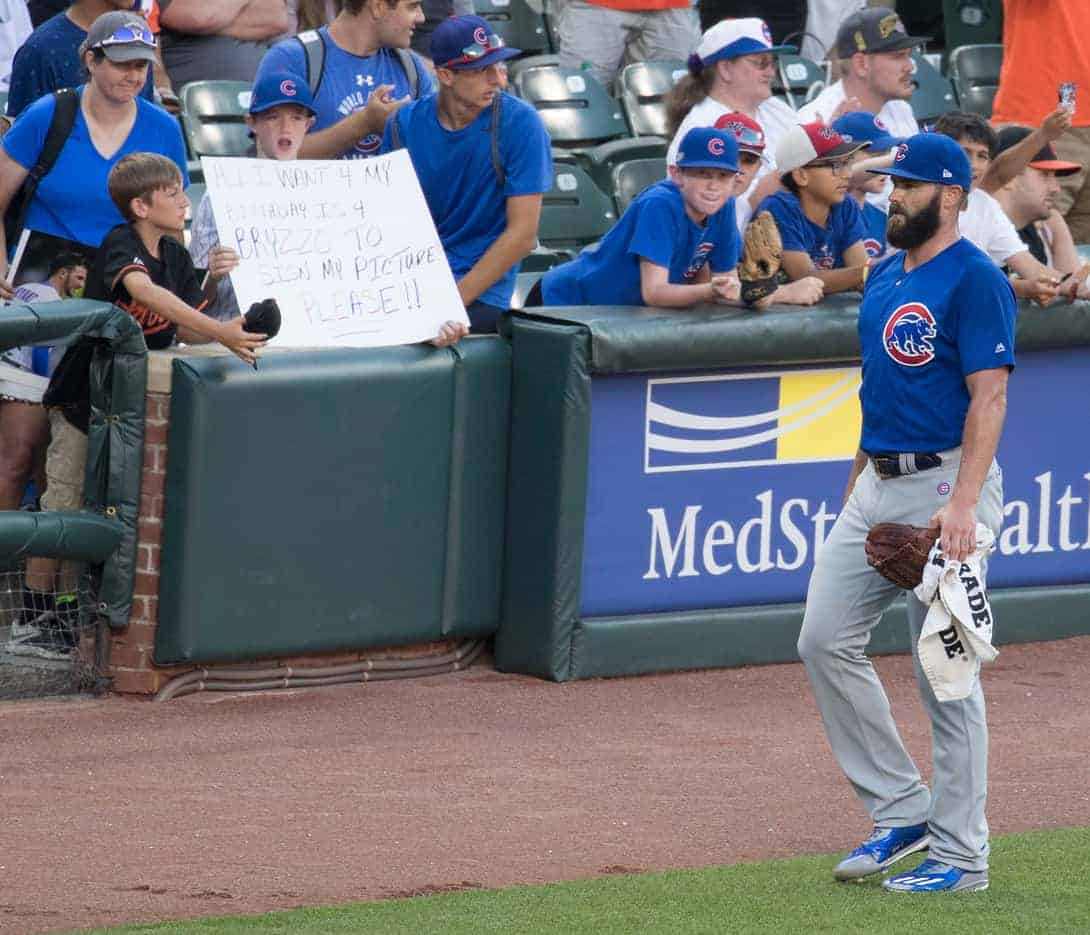This past winter, the Philadelphia Phillies were in a position a lot of fans wish the White Sox occupied. They might not be a player or three away from making the postseason, but they signed Carlos Santana and Jake Arrieta to three-year deals because they could.
Santana cost them the Phillies their second-round pick, and Arrieta just took away their third-rounder. But hey, they didn't need another year of high draft picks, not after losing 89 games or more in five straight seasons. They also had nothing on the books before this splurge. Even after Santana and Arrieta, their payroll for 2018 still only gets to $93 million.
The Phillies needed power and patience to improve their league-worst .685 OPS last year, and they needed another starter besides Aaron Nola. They've helped themselves in both areas, and considering they've spent as much as $178 million on payroll in previous seasons, they can absorb an imperfect contract for a shot at a needed short-term boost.
Should the White Sox find themselves in the same position next winter, the structure of Arrieta's contract is something worth noting. Just like the Eric Hosmer deal, a Scott Boras client signed another front-loaded deal for a team that will have arbitration-eligible salaries to handle in a few years.
Hosmer's opt-out after the fifth year doesn't do all that much to help the Padres, but it provides a little relief. The Arrieta contract's chief wrinkle is more novel. On its face, Arrieta's deal is for three years and $75 million. He'll make $30 million in 2018, $25 million in 2019 and $20 million in 2020. Arrieta can opt out of the final year of his contract, making it a two-year, $55 million deal if all goes well ...
... except the Phillies can void the opt-out by exercising a two-year, $40 million option for 2021 and 2022 (with escalators for innings pitched and Cy Young finishes). That's a new wrinkle, because now this contract has three potential outcomes, rather than the usual two for an opt-out clause.
- Arrieta ages poorly: Three years, $75 million.
- Arrieta pitches well; Phillies want to explore other options: Two years, $55 million.
- Arrieta pitches well; the Phillies want in: Five years, $105 million to $125 million.
The opt-out clause still favors the player, but it restores a fair amount of power to the Phillies, because the worst-case scenario only keeps him around for one year past the opt-out. Also, should Arrieta try to escape, Philadelphia will get to decide whether it wants to sign him to what is effectively a three-year extension worth either $60 million, $70 million or $80 million.
Jeff Sullivan expects this to be a natural evolution of the opt-out clause:
At first, contracts included one opt-out clause. Then we saw contracts with multiple opt-out clauses, like [J.D.] Martinez’s, or Jason Heyward‘s. Now we have our first opt-out offset. And, when I asked around, I got the impression we’ll see more of this. More teams are going to talk about voiding opt-outs with contract extensions. Teams might think about including club options, following player opt-outs. A standard opt-out clause has a value to the player, which some people estimate to be around $20 million or so. Teams are going to look to drive that value down, by asking for their own protective clauses. There’s nothing nefarious here — all contracts are negotiated, and agreed upon. This is just something to get used to. If a regular opt-out tripped you up before, things are only going to get more complex. I can’t even imagine how they’re going to structure Bryce Harper‘s free-agent deal next winter. That’s going to necessitate untold levels of creativity.
And it makes sense, because the Angels and Justin Upton did something similar in their negotiations. Upton could have opted out of the remaining four years and $88.5 million of his deal, but he instead returned to the Angels because they tacked on an extra year and $17.5 million. The Angels kinda acted as if they had a mechanism to void an opt-out, except Upton was able to extract a full no-trade clause from Los Angeles in this round of negotiations (he could block trades to only 20 teams in his previous deal with Detroit).
The Arrieta deal takes it a step or two further on the team's side, practically codifying an extension years before a player decides whether to opt out. Here, the player still ultimately decides his fate, but now the calculus is different.
In fact, I lied above. If Arrieta rolls back his odometer and posts peak seasons, he might want to opt in to the last year of his deal in order to reach free agency faster. That seems like the least likely option since he'll be 35 years old at that point, but Arrieta can't get a second qualifying offer, so he wouldn't have artificial restrictions on his value this time around.
The fact that such an outcome is theoretically in play -- a player at peak value opting in and returning to his club at a bargain rate -- shows that the teams can regain some control at the end of the deal, especially if they can offer more cash up front. Creative structuring will have its limits for top-tier free agents like Harper, Manny Machado and Clayton Kershaw, but it could make the non-elite free agents a little more attractive.
If this offseason foreshadows winters to come, the White Sox could end up shopping from that second shelf just because the value-to-risk ratio tilts in their favor. Based on the White Sox' track record in such deals, they could use all the help they can get lowering the denominator.



